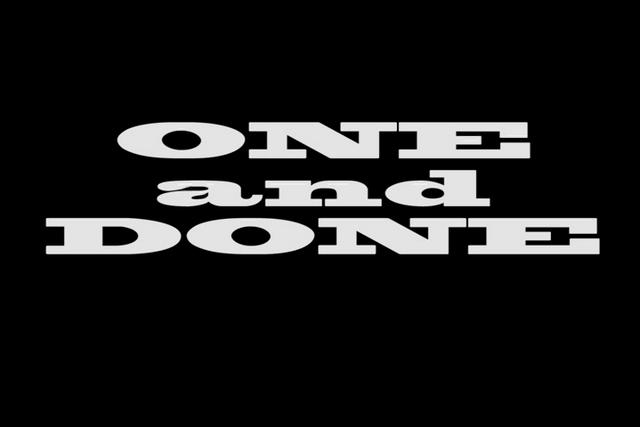By the side of the road
by Jeffrey Saut, Chief Investment Strategist, Raymond James
February 29, 2016
A man lived by the side of the road and sold hot dogs. He was hard of hearing, so he had no radio. He had trouble with his eyes, so he had no newspapers, but he sold hot dogs. He put up a sign on the highway, telling how good they were. He stood by the side of the road and cried, ‘Buy a hot dog, mister’ and people bought. He increased his meat and bun orders and he bought a bigger stove to take care of his trade. He got his son home from college to help him, but something happened. His son said, ‘Father, haven’t you been listening to the radio? There’s a big recession on. The international situation is terrible, and the domestic situation is even worse.’ Whereupon, the father thought, ‘Well, my son has been to college. He listens to the radio and reads the papers, so he ought to know.’ So, the father cut down his bun order, took down his advertising signs, and no longer bothered to stand on the highway to sell hot dogs. His hot dog sales fell almost overnight. ‘You were right, son’ the father said to the boy. ‘We are certainly in the middle of a great recession.’
. . . Author Unknown
I have been getting pounded from all sides with articles, indicators, statistics, etc. about how the U.S. economy is surely headed for a recession, so I will once again repeat one of my mantras, “When everyone is asking the same question, it is usually the wrong question.” Ladies and gentlemen, recessions are even more difficult to predict than the stock market! That said, at this point, I see no evidence the U.S. economy is about to fall into a recession. Yet, you do not need to have a recession to have a bear market. Indeed, since 1968, the S&P 500 has had 10 bear markets (a 20% decline), but four of them were not accompanied by a recession. Of course that begs the question, “What constitutes a bear market?” Speaking to this is my friend Josh Brown, CEO of Ritholtz Wealth Management and author of The Reformed Broker:
| Less than 5% | Pause |
| 5-10% | Dip |
| 10% | Correction |
| 20%+ | Bear Market |
| 50% | Crash |
| 80%+ | Depression |
So, measuring from the May 20, 2015 intraday high (2134.72) into February 11, 2016’s intraday low (1810.10) puts us in “correction mode” (-15.2%) and not a “bear market,” at least according to Josh. The same cannot be said about the S&P Equal Weighted, the S&P MidCap, and the S&P SmallCap indices, all of which have suffered a roughly 20% decline. What I do find interesting is that, at those February “lows”, both the S&P 500 and the D-J Industrial Average made “undercut lows”, meaning they marginally broke below previous lows. That is how decent bottoms are typically made. Last week, we saw the reciprocal of that action with both indices breaking out above previous highs with the Industrials bettering the January 29, 2016 intraday high (16466.30) and the S&P 500 crossing above its February 1, 2016 intraday high (1947.20). Of course that upside breakout action saw my email box light up even more with the ubiquitous question, “Did we just get a Dow Theory buy signal?” My response read, “It depends on whose interpretation of Dow Theory you are using: Charles Dow, William Hamilton, Robert Rhea, George Schaefer, Richard Russell, etc. Under Robert Rhea’s interpretation, we did indeed get a Dow Theory “buy signal” last week. Under the way I was taught Dow Theory, I remain more circumspect. However, it is worth noting that my model did nail the recent lows and then called for a “kiss your sister” type action for last week as the market’s internal energy gets rebuilt. While Monday’s Dow Dance (+228 points) was a surprise, which took the senior index to ~16621, by Friday’s close, the Industrials had not really done much, closing the week at 16639.97, which brings us to this week.
If the model continues to work, as stated two weeks ago, the first week of March should see the market’s “internal energy” rebuilt for another try on the upside. Historically, this also makes sense. As one of our keen-sighted financial advisors (Frank Vigil in Coral Gables) writes:
It appears that history agrees with your current stand. Looks like history likes your energy on the upside for the first week of March. I've noted many times in the past that the 28th of the calendar month through the 6th of the following calendar month have produced all of the gains on the S&P 500 since 1950. It's an amazing stat - to think that one third of the calendar month is responsible for all of the gains on our benchmark index. February is a bit strange in this regard, however, as the S&P 500 has enjoyed very little historical strength in late February. Instead, early March tends to provide the bulls their best historical chance at a rally. Here are the annualized returns for the first five days of March since 1950 on the S&P 500:
March 1: +68.37%
March 2: +8.71%
March 3: +27.41%
March 4: +46.98%
March 5: +29.00%
The call for this week: Last week, the Goldman Sachs of the world were laying out short sales around the 1945 level basis of the S&P 500 on the belief that the 1810-1950 trading range would continue to play. If we decidedly break above that 1950 level, those “shorts” will likely have to cover, suggesting the next level to come into play is the 2000-2040 zone. Also worth mentioning is that the D-J Transports (TRAN/7405.03) started to decline last November and fell 31.22% from print high to print low, which proved to be an early warning signal for the overall stock market. Now the Trannies could be pointing the way higher, having gained 1,000 points from their January 20, 2016 low (6403.31) and, in the process, traveling above their 50-day moving average. Likewise, the S&P 500 (SPX/1948.05) and the D-J Industrials (INDU/16639.97) have bettered their respective 50-DMAs (read: bullish), the New High/New Low Indicator was positive all last week, two of the Advance Decline lines hooked up, the 14 week Stochastic Indicator is on a “buy signal,” and the bullish list goes on. The near-term negatives are that the recent rally has left the markets overbought, and some pundits note that the rally has come on low volume. To the low volume point, Joe Granville wrote that negative volume on a rally was actually bullish, because it implies nobody believes the rally, leaving most of the crowd yet to buy. Further, the sagacious Jason Goepfert (SentimenTrader) writes, “Volume has dropped off as stocks rallied during the past two weeks. The textbooks and their adherents would suggest this is a bad sign, but they rarely look at the facts. And the fact is that stocks perform just as well after low-volume rallies from a low as they do from high-volume rallies off of a low. In some time frames, the low-volume rallies actually outperform.” This morning, however, the “kiss your sister” environment continues with the Spoos off some 8 points at 5:30 a.m. as the Eurozone dips into deflation, China cuts bank reserve requirements for the fifth time, European shares fall on G20 disappointment and Fed interest rate hike worries, and Clinton sets her sights on Trump. Oh well, it must be a Monday.















